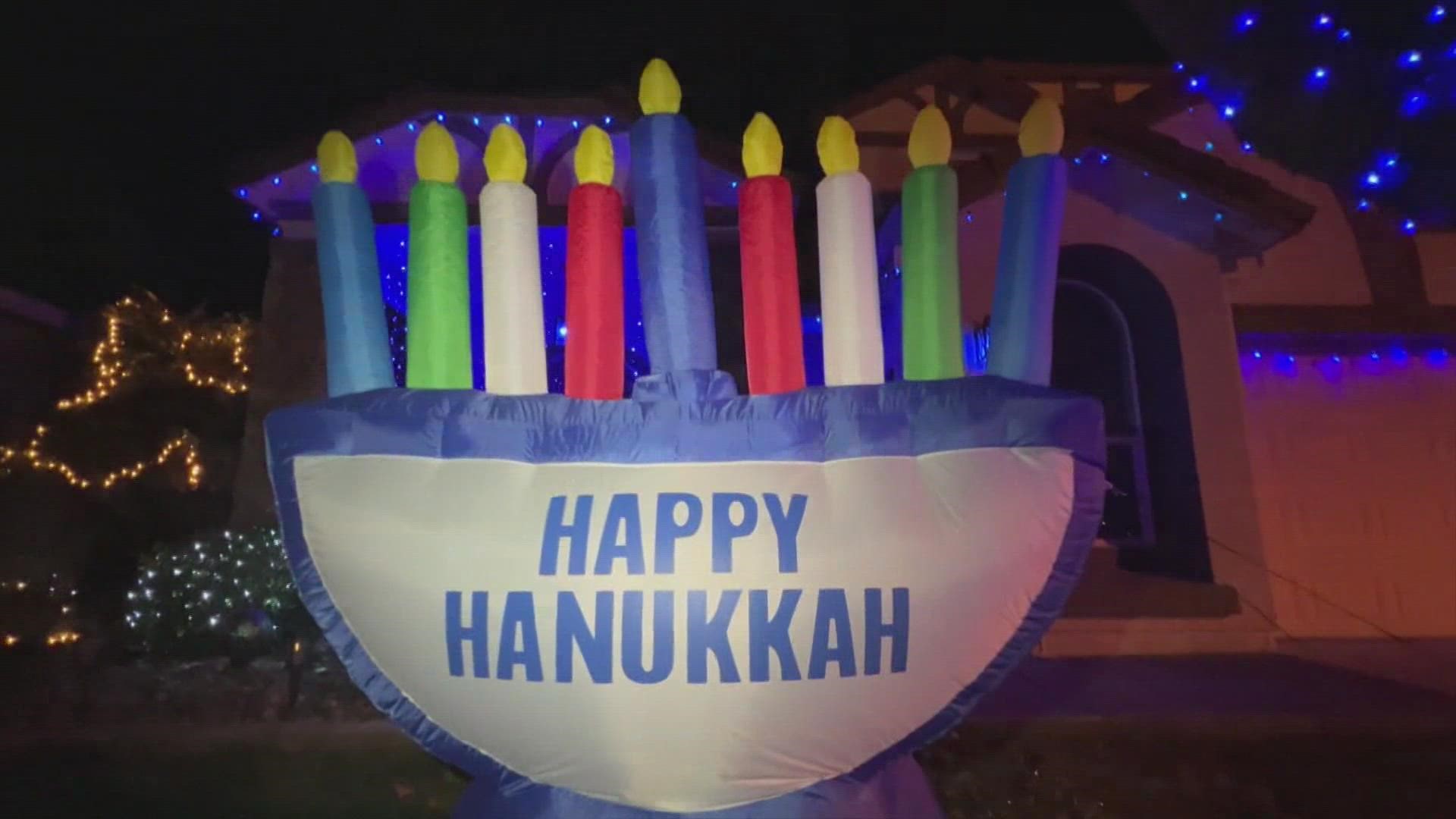SACRAMENTO, Calif. — Hanukkah, also known as the festival of light, much like any other holiday has a handful of foods traditionally eaten for the eight-day celebration.
Foods fried in oil are particularly meaningful to the holiday celebrating the miracle of the oil.
Although this holiday is celebrated by Jews differently across the globe, many come together to enjoy some of the same traditional foods, which each represent different key elements in commemorating the story of Hanukkah.
Here are a few foods that can be be found at the Hanukkah dinner table:
Latkes (potato pancakes)
Also known as the potato pancake, the widely admired brunch-worthy innovation is known mainly for its crispy outside and soft, savory center. Much like other popular Hanukkah foods, latkes are fried in oil and eaten to remind Jews of the miracle of the oil. This celebration commemorated the rededication of the Holy Temple in Jerusalem during ancient times, where the Menorah was lit and miraculously lasted for eight nights instead of one as predicted. Additionally, according to The Nosher, latkes themselves originated as a fried ricotta cheese pancake (Cassola) created as a variation of other fried sweets used to commemorate the holiday in the 15th century. They would eventually be served in different styles and variations up until potatoes became widely used in Europe, resulting in the fried potato pancake enjoyed most commonly in modern celebrations with apple sauce or sour cream.
Sufganiyot (jelly donuts)
Most commonly known in the U.S. as jelly donuts, sufganiyot (or sufganiyah for singular) is no stranger to satisfying sweet-tooths around the world. Donuts in particular are a staple in Western culture, however jelly-filled donuts originated in 16th century Germany, and was quickly picked up by European Jews as the fried, fruit-filled staple of Hanukkah. Similarly to Latkes, they're eaten to celebrate the miracle of the oil. According to the Baltimore Jewish Times, in the 1920s, the Israeli Labor Federation officially declared sufganiyot the official food of Hanukkah.
Gelt (chocolate golden coins)
Adults typically hand out gelt, coin-shaped chocolate wrapped in gold foil, to children after Hanukkah dinner. Gelt was traditionally given to children as a reward for Torah study, however Chabad discusses a deeper meaning to the significance of the chocolate coins and its ties to Hanukkah. During ancient times, when the Greeks began invading the holy temple in Jerusalem and its possessions, they would defile the oil to infuse Jewish possessions with Greek ideals, according to Chabad. Now, they are are given as a reminder of the freedom Jews have to possess wealth in abundance.
Watch more from ABC10: All aboard Folsom's family-friendly holiday lights train | Bartell's Backroads

















